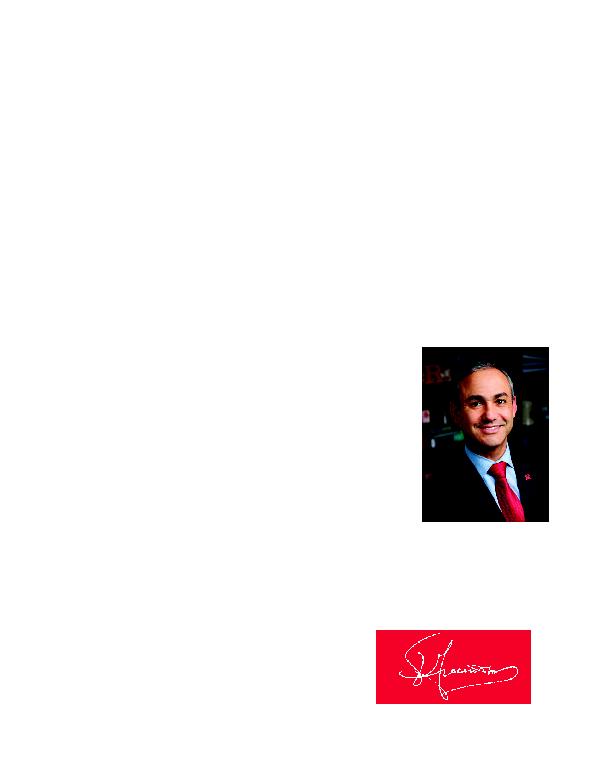
Robert Wood Johnson
I
MEDICINE 1
Dear Colleague,
T
his issue of Robert Wood Johnson Medicine explores diverse settings in which Robert Wood
Johnson Medical School advances its four missions: in education, research, clinical care, and com-
munity health.
Our cover story, "Leading the Way to Improve Health Care for Veterans and Active Military," describes
a new, far-reaching initiative at the medical school. Under the leadership of Carol A. Terregino, MD '86,
associate professor of medicine and senior associate dean for education, the Joining Forces program pro-
vides multidisciplinary training for health care professionals, who are learning about the special burdens
borne by former warriors and their families, while developing the empathy needed to walk in the boots of
veterans.
In "An Island in the Mediterranean Is Furthering Diabetes Research in New Jersey," we learn that the
world's second-highest incidence of type 1 diabetes occurs on Sardinia. Lisa Denzin, PhD, associate pro-
fessor of pediatrics and resident scientist, Child Health Institute of New Jersey, was invited by Sardinian
geneticists to collaborate in their investigation of the role of DM--a protein studied by Dr. Denzin's labo-
ratory--in mediating protection against type 1 diabetes.
"On the Rise: Facilitating the Growth in Knowledge of Yeast Genetics by
Budding Researchers" provides an inside look at the Cold Spring Harbor
Laboratory on Long Island. Last summer, Marc R. Gartenberg, PhD, professor
of biochemistry and molecular biology, helped to lead the laboratory's seminal
course on current practices in yeast genetics and genomics. Invited speakers and
students included many of the world's outstanding yeast geneticists and molecu-
lar biologists.
"Where Are They Now? Alumni Excel in Residency Programs Nationwide"
takes us from coast to coast--and beyond--to meet a remarkable cohort of
Robert Wood Johnson Medical School graduates. From first-year residents to
seasoned fellows, they describe the importance of their medical school education,
their choice of a specialty, and their enthusiasm for their current and future work.
In another innovative program, the medical school draws on the resources of other Rutgers University
schools, including the Mason Gross School of the Arts. "Collaborative Movement Programs Meet at the
Intersection of Arts Engagement and Health" describes several initial projects that have successfully used
dance and movement techniques to relieve stress and help patients with Parkinson's disease and their care-
givers.
At home and beyond, the medical school is part of the evolution in groundbreaking research and patient
care. Please enjoy this edition of Robert Wood Johnson Medicine.
Sincerely,
Vicente H. Gracias, MD
Dean (Interim)
L
E
T
T
E
R
F
R
O
M
T
H
E
D
E
A
N
J
O
H
N
E
M
E
R
S
O
N
